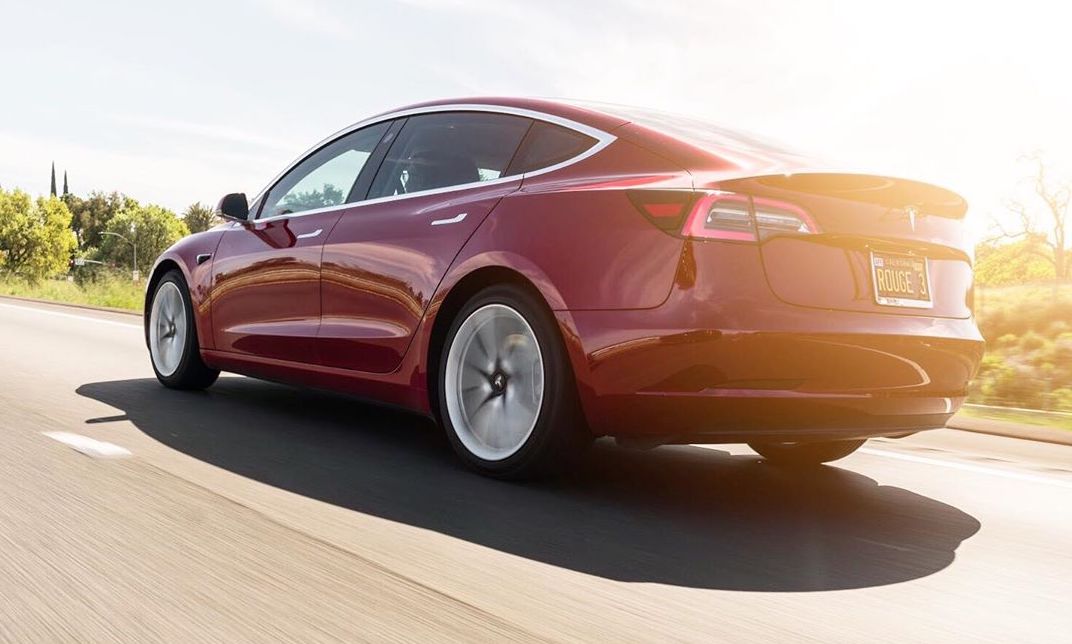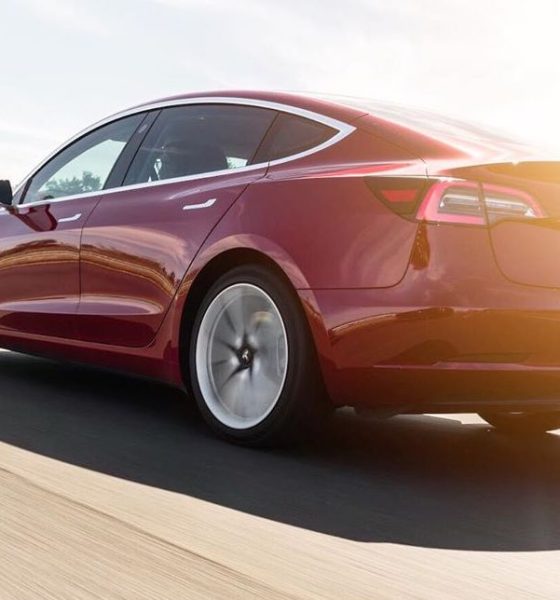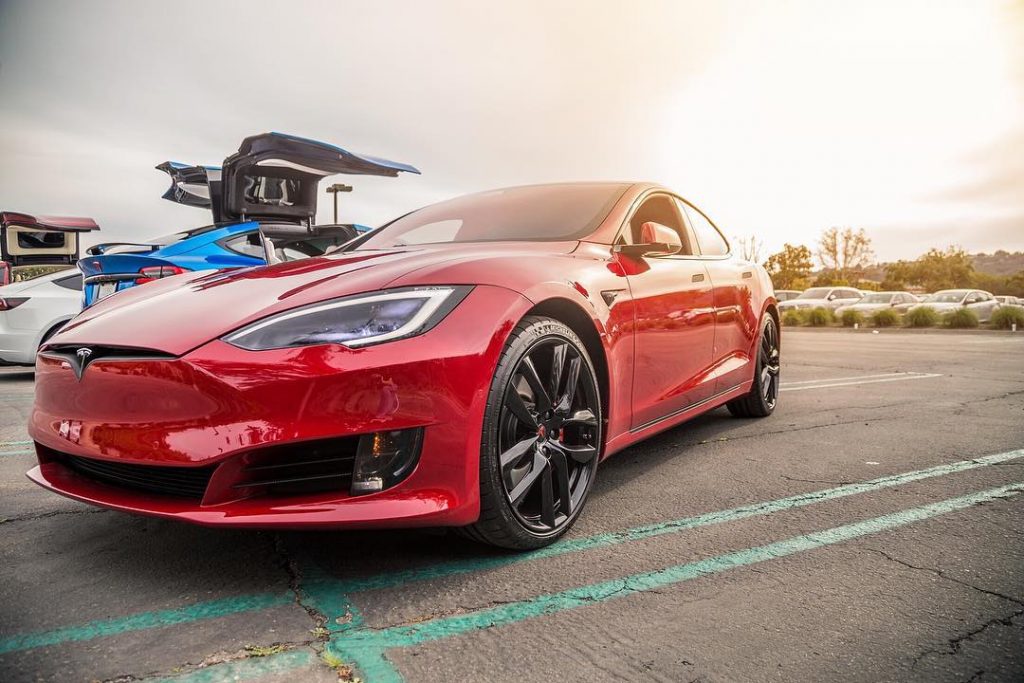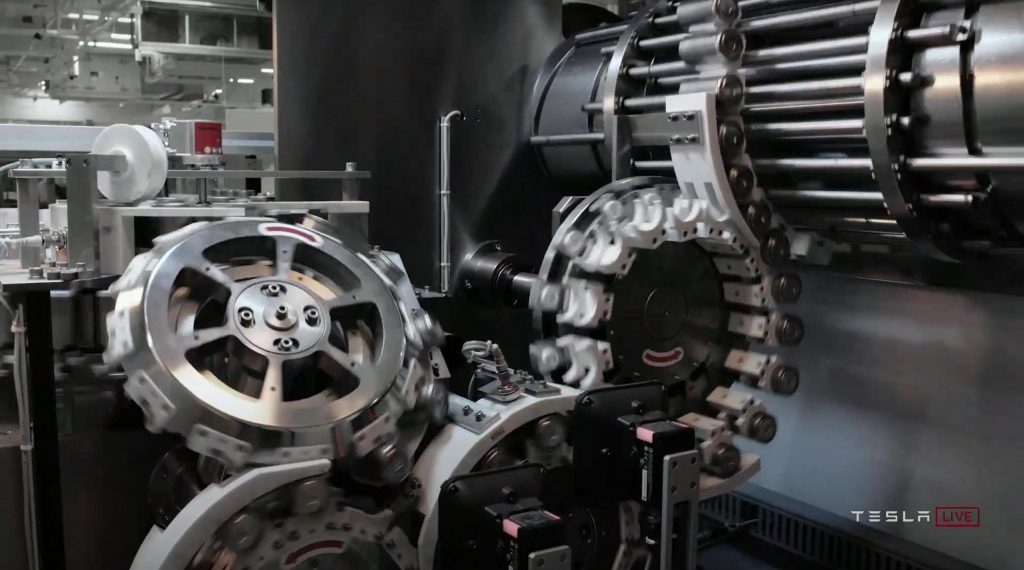

News
Tesla’s S3XY range updates show how ridiculously far legacy auto has fallen in the EV race
Anyone that has followed the Tesla story over the past few years would know that one of the primary talking points against the electric car maker is the impending competition that’s coming from more experienced, more competent carmakers. Critics argued that once legacy automakers get serious in their electric car efforts, a company as inexperienced as Tesla would easily be overwhelmed. This scenario has not happened at all — and if Tesla’s recent range updates to its S3XY lineup are anything to go by, it is becoming evident that legacy auto has fallen ridiculously behind in the electric car race.
Tesla’s recent range updates, which were rolled out together with the “refresh” of the Model 3, further cemented the company’s place at the top of the EV market. With the new updates, the Model 3 Long Range Dual Motor AWD was able to hit an EPA-estimated range of 353 miles per charge, and even its heftier, heavier sibling, the Model Y, was able to achieve a range of 326 miles. The Model X, an incredibly heavy tank of a vehicle, reached 371 miles per charge, and even the power-hungry Tesla Model S Performance is nearing 400 miles at 387 miles per charge.
It should be noted that Tesla was able to accomplish these improvements without any of the big updates that it announced during Battery Day. During the highly-anticipated event, Tesla revealed its batteries’ new 4680 form factor, which has 5x the volume of the Model 3 and Model Y’s 2170 cells. Tesla also announced a new vehicle manufacturing system that prioritizes single-piece casts and a structural battery pack. Other innovations, such as the use of high-nickel cathodes and silicon anodes, were discussed as well.

None of these innovations are in Tesla’s recently-updated vehicles.
Ultimately, Tesla’s recent updates highlight just how far the company has gone ahead of the pack in the electric vehicle sector. The fact that the electric car maker was able to achieve a 371-mile range for the Model X Long Range Dual Motor AWD with the same 100 kWh battery pack and the same 18650 cells as its Model X 100D predecessor is almost ridiculous. This is especially notable considering that the Audi e-tron, which has a battery pack that’s almost the same size as the Model X, has a range of 222 miles, and that’s the variant with the improved range already.
Tesla’s lead in range becomes even more significant when one considers the Model 3 and the Model Y, both of which utilize a battery pack that pretty much tops up at 75 kWh. A comparison of the two vehicles against the competition shows a stark contrast, with the Polestar 2, a car that’s largely considered as a legitimate rival to the Model 3, having an EPA-estimated range of 233 miles from a 78 kWh battery pack. The Jaguar I-PACE, a crossover that’s pretty close in size to the Model Y, follows the same pattern, having an EPA-estimated range of 246 miles per charge from a 90 kWh battery.

There are likely numerous reasons behind Tesla’s insane lead in the electric car sector today, but a good part of it likely has a lot to do with the company’s intense focus on battery tech and development. Tesla has been focused on improving and optimizing its batteries since Day 1, and as could be seen in the recent range updates of the S3XY lineup, this obsessive pursuit of optimization matters a lot. These efforts are not emulated at all with most legacy automakers, as veterans seem typically content with using off-the-shelf batteries from suppliers for their EV programs.
Yet perhaps the most uncomfortable reason behind legacy auto’s distance from Tesla’s vehicles today is something far simpler: hubris. While legacy automakers have been stating for years that they are serious about their future shift to electric cars, their actions have largely been far less tangible than their words. Today, it is almost as if Tesla’s competitors in the EV sector were far too comfortable just watching the electric car maker improve over the years. And now that Tesla has turned into a force that’s very difficult to ignore, they are scrambling to catch up.
Unfortunately, it is very difficult to catch a moving target. By the time legacy automakers can catch up to where Tesla is today, it is almost certain that the electric car maker will be even further ahead. This distance will likely be even farther, too, as Tesla’s next-generation battery technology is yet to enter the picture. Once Tesla’s 4680 cells are in production and its vehicles are being built with structural battery packs, the gap between the electric car maker and its competitors will most definitely be even more significant. And that, at least for legacy auto, is a scenario worthy of the final act of a tragedy.

Elon Musk
Elon Musk’s X will start using a Tesla-like software update strategy
The initiative seems designed to accelerate updates to the social media platform, while maintaining maximum transparency.

Elon Musk’s social media platform X will adopt a Tesla-esque approach to software updates for its algorithm.
The initiative seems designed to accelerate updates to the social media platform, while maintaining maximum transparency.
X’s updates to its updates
As per Musk in a post on X, the social media company will be making a new algorithm to determine what organic and advertising posts are recommended to users. These updates would then be repeated every four weeks.
“We will make the new 𝕏 algorithm, including all code used to determine what organic and advertising posts are recommended to users, open source in 7 days. This will be repeated every 4 weeks, with comprehensive developer notes, to help you understand what changed,” Musk wrote in his post.
The initiative somewhat mirrors Tesla’s over-the-air update model, where vehicle software is regularly refined and pushed to users with detailed release notes. This should allow users to better understand the details of X’s every update and foster a healthy feedback loop for the social media platform.
xAI and X
X, formerly Twitter, has been acquired by Elon Musk’s artificial intelligence startup, xAI last year. Since then, xAI has seen a rapid rise in valuation. Following the company’s the company’s upsized $20 billion Series E funding round, estimates now suggest that xAI is worth tens about $230 to $235 billion. That’s several times larger than Tesla when Elon Musk received his controversial 2018 CEO Performance Award.
As per xAI, the Series E funding round attracted a diverse group of investors, including Valor Equity Partners, Stepstone Group, Fidelity Management & Research Company, Qatar Investment Authority, MGX, and Baron Capital Group, among others. Strategic partners NVIDIA and Cisco Investments also continued support for building the world’s largest GPU clusters.
News
Tesla FSD Supervised wins MotorTrend’s Best Driver Assistance Award
The decision marks a notable reversal for the publication from prior years, with judges citing major real-world improvements that pushed Tesla’s latest FSD software ahead of every competing ADAS system.

Tesla’s Full Self-Driving (Supervised) system has been named the best driver-assistance technology on the market, earning top honors at the 2026 MotorTrend Best Tech Awards.
The decision marks a notable reversal for the publication from prior years, with judges citing major real-world improvements that pushed Tesla’s latest FSD software ahead of every competing ADAS system. And it wasn’t even close.
MotorTrend reverses course
MotorTrend awarded Tesla FSD (Supervised) its 2026 Best Tech Driver Assistance title after extensive testing of the latest v14 software. The publication acknowledged that it had previously criticized earlier versions of FSD for erratic behavior and near-miss incidents, ultimately favoring rivals such as GM’s Super Cruise in earlier evaluations.
According to MotorTrend, the newest iteration of FSD resolved many of those shortcomings. Testers said v14 showed far smoother behavior in complex urban scenarios, including unprotected left turns, traffic circles, emergency vehicles, and dense city streets. While the system still requires constant driver supervision, judges concluded that no other advanced driver-assistance system currently matches its breadth of capability.
Unlike rival systems that rely on combinations of cameras, radar, lidar, and mapped highways, Tesla’s FSD operates using a camera-only approach and is capable of driving on city streets, rural roads, and freeways. MotorTrend stated that pure utility, the ability to handle nearly all road types, ultimately separated FSD from competitors like Ford BlueCruise, GM Super Cruise, and BMW’s Highway Assistant.
High cost and high capability
MotorTrend also addressed FSD’s pricing, which remains significantly higher than rival systems. Tesla currently charges $8,000 for a one-time purchase or $99 per month for a subscription, compared with far lower upfront and subscription costs from other automakers. The publication noted that the premium is justified given FSD’s unmatched scope and continuous software evolution.
Safety remained a central focus of the evaluation. While testers reported collision-free operation over thousands of miles, they noted ongoing concerns around FSD’s configurable driving modes, including options that allow aggressive driving and speeds beyond posted limits. MotorTrend emphasized that, like all Level 2 systems, FSD still depends on a fully attentive human driver at all times.
Despite those caveats, the publication concluded that Tesla’s rapid software progress fundamentally reshaped the competitive landscape. For drivers seeking the most capable hands-on driver-assistance system available today, MotorTrend concluded Tesla FSD (Supervised) now stands alone at the top.
News
Elon Musk’s Grokipedia surges to 5.6M articles, almost 79% of English Wikipedia
The explosive growth marks a major milestone for the AI-powered online encyclopedia, which was launched by Elon Musk’s xAI just months ago.

Elon Musk’s Grokipedia has grown to an impressive 5,615,201 articles as of today, closing in on 79% of the English Wikipedia’s current total of 7,119,376 articles.
The explosive growth marks a major milestone for the AI-powered online encyclopedia, which was launched by Elon Musk’s xAI just months ago. Needless to say, it would only be a matter of time before Grokipedia exceeds English Wikipedia in sheer volume.
Grokipedia’s rapid growth
xAI’s vision for Grokipedia emphasizes neutrality, while Grok’s reasoning capabilities allow for fast drafting and fact-checking. When Elon Musk announced the initiative in late September 2025, he noted that Grokipedia would be an improvement to Wikipedia because it would be designed to avoid bias.
At the time, Musk noted that Grokipedia “is a necessary step towards the xAI goal of understanding the Universe.”
Grokipedia was launched in late October, and while xAI was careful to list it only as Version 0.1 at the time, the online encyclopedia immediately earned praise. Wikipedia co-founder Larry Sanger highlighted the project’s innovative approach, noting how it leverages AI to fill knowledge gaps and enable rapid updates. Netizens also observed how Grokipedia tends to present articles in a more objective manner compared to Wikipedia, which is edited by humans.
Elon Musk’s ambitious plans
With 5,615,201 total articles, Grokipedia has now grown to almost 79% of English Wikipedia’s article base. This is incredibly quick, though Grokipedia remains text-only for now. xAI, for its part, has now updated the online encyclopedia’s iteration to v0.2.
Elon Musk has shared bold ideas for Grokipedia, including sending a record of the entire knowledge base to space as part of xAI’s mission to preserve and expand human understanding. At some point, Musk stated that Grokipedia will be renamed to Encyclopedia Galactica, and it will be sent to the cosmos.
“When Grokipedia is good enough (long way to go), we will change the name to Encyclopedia Galactica. It will be an open source distillation of all knowledge, including audio, images and video. Join xAI to help build the sci-fi version of the Library of Alexandria!” Musk wrote, adding in a later post that “Copies will be etched in stone and sent to the Moon, Mars and beyond. This time, it will not be lost.”








